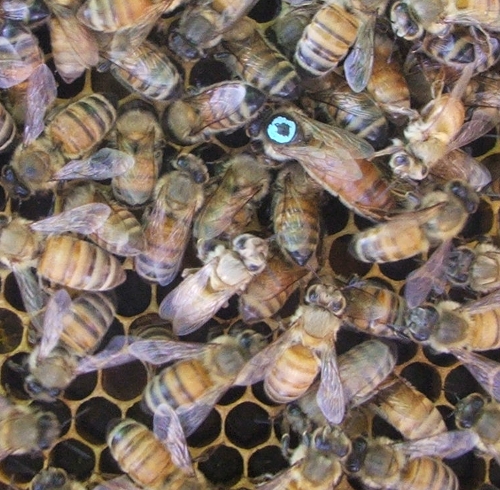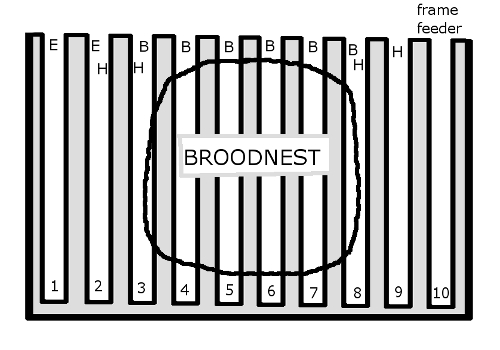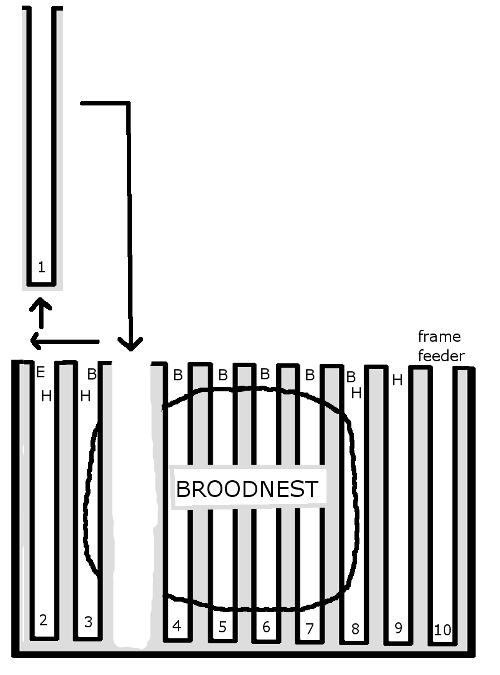I wrote last time about my concern that my colony is behind. At my last inspection they still hadn’t drawn out (built wax comb onto) enough frames to warrant the second brood box. Still, my inspection indicated that the queen would soon run out of immediately available space to lay eggs. In the summer a good queen can lay 1500-2000 eggs a day!
So yesterday I went in to move one of the empty outside frames in couple of spots in.
When bees build comb and then fill it up with brood lives in two boxes, they will always use it for brood {UPDATE: this turns out not to be true: the bees can clean out honey and use the cell for brood}. As the new bee emerges from her cocoon, her pupal lining stays behind and is not cleaned out – neither are waste and bits of pollen and propolis. Over the years, brood comb, then, gets darker, even black. Since the chance of disease rises and the cells become smaller with each new shedding of a cocoon, brood comb needs replacing every four or so years (though it depends). Comb filled with honey will always use be honeycomb {UPDATE: nope}, which is lighter in color, because each cell always gets cleaned out totally when the bees go into their honey stores.
The brood nest (adult bees, eggs, larvae and pupae) forms a sphere in the middle of the hive. When you add a second box on top, the bees will gradually move the nest up. By winter, the nest will be in the top box. In spring you reverse the boxes, so the nest is in the bottom box again. And so forth.
My brood (B) nest, confined as yet to one single box, was honey-bound: it was enclosed on both sides with honeycomb (H), and not large enough.
One of the solutions is to put the second brood box on top: no less than ten empty frames. But it is desirably that the bees draw out all the frames in both boxes. This means the beekeeper often needs to move frames around. I moved the empty first frame into the third slot, in between two frames of brood, so the bees will draw it out and fill it with brood.
This is what I love about beekeeping (or what I have experienced of it so far). It is like a good game: rule driven, with a challenging array of variations. You observe patterns, deduce what is going on, and manipulate to get the best outcome. But the game is much bigger than that. All that the bees do, all that the weather brings, all that the flowers offer and all the interference from other animals and beekeepers, etc., it is all rule-driven: it has causes, reasons. Most of these are natural. And nature is vast. We, beekeepers, have very limited insight in them. So the game is new every time. Keeps you on your toes.


